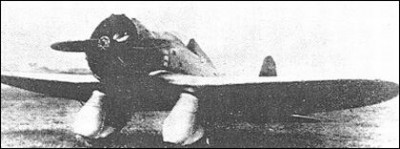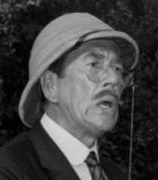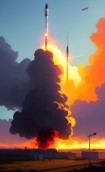|
I don't get how anyone can think a conveyor belt can make an airplane not build up speed. Like the wheels aren't connected to the engines, it's not a car, or a paddle steamer.
|
|
|
|

|
| # ? May 24, 2024 22:25 |
|
Jaguars! posted:Is it worth spending an extra 30k to get the model with a teakettle? need answer fast Those are NZ dollars - it's roughly the same cost as the T55.
|
|
|
|
OwlFancier posted:Also if your carrier is getting shot at you're doing it wrong, so why not make it as fast as you can? The escort carriers were pretty slow.
|
|
|
|
feedmegin posted:Not true early on in Nazi Germany mind you, check out Mussolini based his foreign policy on acting as a bulwark against German expansionism, be it into Austria or the Rhineland, and as such an important ally to France and the UK. Things only fell apart when he invaded Ethiopia. Even in 1938 Hitler still was nervous during the Anschluss, awaiting Mussolini's approval, which he wasn't sure he would receive - and Mussolini, having based much of his earlier political capital on guaranteeing Austrian independence (in large part out of self-interest, as pan-Germanism would threaten stability in Italian South Tyrol), was furious about German hubris and it took him two days to compose a short telegraph responding to HItler's moves.
|
|
|
|
Nebakenezzer posted:There's a few different ways that could play out - Germany was actually restricted in its military spending too for trade reasons: the balance of trade. Steel I remember specifically was something that was earmarked for trade above military purposes, as even a sorta-command economy like the Reich needed foreign money to buy foreign goods that they needed for their military buildup. The first Reich finance minister actually thought that after the initial rebuilding of the Reich military + projects to combat unemployment, the Reich was going to return to a more even economic footing, but the top Nazis ultimately decided no, deciding on 'screw literally everything but military buildup.' I continue to pester you about this, simply because I always assumed Italy was much the same way, knowing basically nothing about it; and if it was treading a more financially reasonable path, well, that's pretty interesting to me. I guess the best way to describe Italy would be more sustainable than Germany. One of the main points in Wages of Destruction was that the leaders of Germany were well aware that for the reasons you have mentioned (foreign currency reserves, steel etc.) the re-arming plan would have to 'peak' around 1939, after which point the Germans would be losing ground compared to the Western Allies. The Italians started earlier than the Germans which might have altered their decision making, but ultimately they decided not to completely ditch the financial orthodoxy of the time and thus couldn't fund their military to the same degree.
|
|
|
|
Phobophilia posted:I don't get how anyone can think a conveyor belt can make an airplane not build up speed. Like the wheels aren't connected to the engines, it's not a car, or a paddle steamer. They'd literally never get off the ground if they were propelled by their wheels but goons gonna goon.
|
|
|
|
Also noteworthy on the takeoff thing, those airplane launch considerations were among the primary factors that determined which islands in the Pacific were fought over and which were ignored. There was the range of planes from island airbases, yes, but also the considerations of how windy they were and the prevailing direction of the wind. More wind means easier for planes and especially bigger planes to take off.
|
|
|
|
FAUXTON posted:They'd literally never get off the ground if they were propelled by their wheels but goons gonna goon. but no plane is propelled by its wheels, hence his point. i am sorry sir but is you who is the goon in this scenario.
|
|
|
|
GotLag posted:Yeah, it's effectively lowering the stall speed. Is there any other reason, or is that it? I mean other than the general utility of being able to move quickly. It helps a lot on takeoffs as well. The plane is going to have to reach its takeoff speed to take off. They have catapults but rolling takeoffs are considerably faster, which has huge effects for a strike being able to launch as a group and reach a given range (the first planes off have to loiter until the last ones are off or you aren't launching a single strike). As far as landing goes, you add the amount of distance the carrier covers while the plane is coming to a stop as well as raising the speed that the plane has to decelerate to, meaning less deceleration. That's one of the contributing factors to everyone realizing that big fast carriers are the hotness despite them putting a lot of eggs in one basket. The US converted the Lexington and Saratoga, but the first purpose built carrier was the smaller Ranger, and they quickly realized it couldn't operate in nearly as wide a spread of conditions, both because a smaller hull was effected by weather more, and greater speed allowed more options for avoiding the worst of weather. It also is a big help when you're trying to get into and out of range of land based spotting as quickly as possible. Actually, that leads to a fun question of how much the fleet carrier in its definitive form being present for the start of WWI owes its existence to the Treaty limitations. The British had the large light cruisers that were already starting to become carrier conversions, but would the US and Japan have matched them immediately or built up from smaller ships? Panzeh posted:The escort carriers were pretty slow. As fast as you can changes meaning very quickly when your goal is something based on cheap merchantmen hulls so you can make a ton. FAUXTON posted:They'd literally never get off the ground if they were propelled by their wheels but goons gonna goon.
|
|
|
|
Vincent Van Goatse posted:Yep. Eighteen out of a total of 24 completed and 32 planned. A money quote from Rep. Carl Vinson: "The modern development of aircraft has demonstrated conclusively that the backbone of the Navy today is the aircraft carrier. The carrier, with destroyers, cruisers and submarines grouped around it[,] is the spearhead of all modern naval task forces." The irony here being that the IJN, despite having prohibitively the best carriers and carrier aircraft in the world early in the war, believed right up to the end that eventually the American battle fleet would steam across the Pacific and finally engage the IJN in a proper battleship shoot-em-up. In that sense, the USN was well ahead of the curve despite having dramatically inferior equipment and sailors/airmen. It is kind of an interesting question - if the IJN hadn't crippled the USN battle fleet at Pearl, would they have sailed to defend the Philippines like the Japanese were convinced they would? edit - it is also ironic that given roughly equal footing the USN battle fleet probably would have won a battleship fight with the IJN. bewbies fucked around with this message at 15:02 on Jul 18, 2017 |
|
|
|
bewbies posted:The irony here being that the IJN, despite having prohibitively the best carriers and carrier aircraft in the world early in the war, believed right up to the end that eventually the American battle fleet would steam across the Pacific and finally engage the IJN in a proper battleship shoot-em-up. In that sense, the USN was well ahead of the curve despite having dramatically inferior equipment and sailors/airmen. Probably not. At most, you'd likely see Guadalcanal happen a bit earlier. No one in WW2 ended up really using their battleships except as AA batteries and shore bombardment platforms, the naval campaign around Guadalcanal was the biggest exception. Also unlikely due to the personalities involved - Halsey and MacArthur would have wanted to do that, but Nimitz, Spruance, and King were much more cautious and practical. The IJN's conceptual problem was that they still envisioned the carrier battle group as a raiding force, not a decisive weapon of battle in itself. Throughout the war, the IJN envisioned the carrier as a way to raid and harry and wear down the enemy, not as a weapon that could smash an entire fleet by its lonesome and move on to press the attack against islands.
|
|
|
|
bewbies posted:The irony here being that the IJN, despite having prohibitively the best carriers and carrier aircraft in the world early in the war, believed right up to the end that eventually the American battle fleet would steam across the Pacific and finally engage the IJN in a proper battleship shoot-em-up. In that sense, the USN was well ahead of the curve despite having dramatically inferior equipment and sailors/airmen. By the best carriers do you mean the ships themselves or the ships as part of a doctrinal and organizational unit? If it's the former I'd be interested to hear your take on it. I'd also be interested to hear your take on the battleship fight.
|
|
|
|
WoodrowSkillson posted:but no plane is propelled by its wheels, hence his point. i am sorry sir but is you who is the goon in this scenario. i was agreeing
|
|
|
|
Cythereal posted:Probably not. At most, you'd likely see Guadalcanal happen a bit earlier. No one in WW2 ended up really using their battleships except as AA batteries and shore bombardment platforms, the naval campaign around Guadalcanal was the biggest exception. Also unlikely due to the personalities involved - Halsey and MacArthur would have wanted to do that, but Nimitz, Spruance, and King were much more cautious and practical. Nobody in the pacific, battleships saw a large amount of use in Europe.
|
|
|
|
I was looking at a list of ICBM stockpiles, and I was wondering why is the US arsenal of ICBMs almost completely silo-based while the Soviet and Chinese arsenals had/have a shitload of mobile ICBMs?
|
|
|
|
zoux posted:I was looking at a list of ICBM stockpiles, and I was wondering why is the US arsenal of ICBMs almost completely silo-based while the Soviet and Chinese arsenals had/have a shitload of mobile ICBMs? You need mobile ICBMs to enact a second strike doctrine with limited resources.
|
|
|
|
Modern carriers have conveyors, they call them catapults.
|
|
|
|
Imagine if you will a very slow steam catapult on the edge of a flight deck... ...but installed backwards.
|
|
|
|
When I say "modern carriers" I am of course excluding the sad slide whistle that is the Queen Elizabeth class.
|
|
|
|
Didn't that whole jet liner on a conveyer belt thing ultimately boil down to the logical fallacy in the definition of the problem?
|
|
|
|
Look they're following a proud royal navy tradition beginning with the HMS Argus whereby aircraft carriers and cruise liners are interchangeable. These ones are just destined to do it the other way around.
|
|
|
|
GotLag posted:When I say "modern carriers" I am of course excluding the sad slide whistle that is the Queen Elizabeth class. I like defining light carriers as having ski jumps so that I can call the QE class large light carriers.
|
|
|
|
The reason they're called the queen elizabeth class is because her maj has her eye on one for the new royal yacht.
|
|
|
|
Fangz posted:boil down to the logical fallacy in the definition of the problem? Doesn't it always?
|
|
|
|
This seems like a reasonable time to repost Lt. George Gay's accounts of being shot down at Midway and observing the battle afterward. http://www.defensemedianetwork.com/stories/midway-the-sole-survivor-of-torpedo-squadron-8/ It's long, but some good/funny excerpts: quote:Its been a very general opinion that the anti-aircraft fire shot our boys down and thatís not true. I donít think that any of our planes were damaged, even touched by anti-aircraft fire. The fighters, the Zeros, shot down every one of them, and by the time we got in to where the anti-aircraft fire began to get hot, the fighters all left us. I was the only one close enough to get any real hot anti-aircraft fire, and I donít think it even touched me and I went right through it, right over the ship. It's gotta be weird being shot down right among the fleet and hiding out while the war rages on around you.
|
|
|
|
afternoon, friends https://www.theguardian.com/world/2017/jul/18/cannonball-quebec-city-seven-years-war-british-french-canada edit: it's probably safe, if water got into it at any point it's caked hard
|
|
|
|
Allway to Ten~ah screw it, More Japanese Engines! Mitsubishi pre-WW2 engines were up for discussion last time, so lets see what they designed themselves! Thanks to building many engines under various licenses, Mitsubishi was well-suited to designing and developing their own, regardless of the engine's configuration. They had a simple designation system for their own designs: A for air-cooled, B for liquid-cooled, and D for diesel. Some of these also had names attributed to them, although this seems to be only for engines destined for the Navy. The A1 was the first original Mitsubishi engine, a 14-cylinder radial engine rated at 700hp. It resembled the Armstrong Siddeley Leopard. The A2 was a 9-cylinder 300hp radial designed and built in 1929/1930, while the A3 was a 600hp 9-cylinder radial that closely resembled the Pratt and Whitney 600hp Hornet. As with the A1, this may be a locally built version or the same engine with modified dimensions (Imperial to Metric).  Mitsubishi's 1MF10 prototype The A4 Kinsei was a 650hp two-row 14-cylinder radial, used in Mitsubishi's 3MT5, a carrier attack bomber. Problems with the aircraft led to few being produced and being relegated for land-based training. A later model of the A4 was used in the 1MF10, an experimental aircraft that the Zero traces its roots from. This aircraft would be powered by a 580-780hp A4, but problems saw both prototypes losing their tails in flight, luckily with no fatalities. Then came the A5, a 400-475hp 9-cylinder radial engine. It was the first indigenous Japanese aero-engine to be accepted for Army service, but otherwise was fairly unremarkable. The B1 was first built in 1933 to be used on the Ki-1. The engines themselves were 700hp V12s but the aircraft itself was slow and overweight. Mitsubishi revised the engine multiple times, having the Hatsudoki designation Ha-2, Ha-2-II, and Ha-2-III. An increased rating of 940hp did little for the Ki-1, as it was still slow and overweight. The Ha-2 would be the last liquid-cooled Mitsubishi engine accepted for service. Afterwards, the company experienced a restructuring in 1934, and we start to see engine designs that last to the end of the conflict in 1945.  A Mitsubishi Ki-21 The A6 Shinten and A7 Shinten-Kai engines appear to have been modifications of the A4, which was achieved by extending the stroke by 10mm and 20mm, however it seems references aren't quite sure which was the A6 and which was the A7. The A6 was rated at 920hp and the A7 at 950hp. The A6's sole use appears to be with the H3H, but the extent of their use isn't documented. The A7, on the other hand, powered several aircraft. Firstly, it was the engine of choice for the H5Y "Cherry", a flying boat, itself designed to be a smaller version of the H6K "Mavis". In service of the Army, they were designated Ha-6, and mounted in the prototypes of the Ki-21, the Ki-30, and the Ki-19. The Ki-21 and Ki-19 were competitors for a production contract, the Army choosing to use the Mitsubishi (Ki-21) airframe along with Nakajima engines. Nakajima would have the last laugh as both the Ki-21 and Ki-30 would receive Nakajima Ha-5 engines in their first iterations. (The Ki-19 was not accepted for production) Then comes the A8 Kinsei 3, a 830hp radial engine which had the same stroke as the A4 but a higher compression ratio. 109 examples of this engine were built, powering several G3M prototypes, among other projects. Later variants of the engine were rated at 910/1030hp. By the time the Kinsei 4 was ready for production in 1937, the Navy had moved to two-digit Model numbers, which is why... The Kinsei 41 is the next in the series. Originally intended to be the Kinsei 4, it had a higher compression ratio and a better supercharger than the 3 model. This 1,075hp engine was installed on G3M2's called the Model 22. This airframe would subsequently be outfitted with Kinsei 42's and 45's. The 42 simply had an air pump in the accessory unit; the 45 had an improved altitude rating. The Kinsei 43, the most popular of the series, was de-rated to 1,000hp for better fuel economy and had a constant speed propeller governor. It was used in the B5M "Mabel", an aircraft the was pitted against the B5N and lost, but produced in order to protect against shortfalls due to the B5N's more complicated production. Once this was proven to not be an issue, the production of B5M's was terminated after 125 examples. The engine marched on, however, and saw service with the H6K, the E13A, and the D3A. The Kinsei 44 was a re-rated version with 1,070hp that had a machine gun interrupter mechanism and also an automatic manifold pressure regulator. The Kinsei 46 was itself re-rated at 930hp for extreme fuel economy with the H6K4 Model 22 and the -L version. Going back to liquid-cooled engines, the B2 was a 600hp water-cooled V12 built in 1934, but was never used. The A9 was a one-off 610hp radial engine from 1935 but seems to have only ever been used in the prototype of the A5M. Then we have the B3, another V12 liquid-cooled engine, built in limited numbers and achieving very little. Originally rated at 800hp, some would eventually be built to a rated horsepower of 1,000, possibly supercharged, but were never used in any projects. Next is the A10 Kasei, a 14-cylinder radial engine produced in 1937. It was Mitsubishi's largest engine at the time, with 1,500 horsepower. It appears to have been a one-off. The author admits that, starting now, many references too more recent engines are lost forever due to the accelerated pace of development and loss of records, so some numbers in various series will be missing. The B4 followed, a liquid-cooled V12 with space for a 20mm cannon. Several versions exist, each being slightly more powerful than the last, going from 700hp to 1,070hp. None ever found official use. We then come across the D3, a 650/750hp 12-cylinder diesel engine, of which only one was built. Sadly, most of the documentation on Mitsubishi's Diesel engines is lost, so little is known of about this engine.  A Ki-46 "Dinah" The A14 Zuisei followed in 1938, derived from the Kinsei 40 but with a shorter piston stroke (a 20mm reduction). It was speculated that it was a copy of the Pratt & Whitney Twin Wasp Junior, although this is false as the Zuisei had a single cam ring pushrod arrangement. The Zuisei was the only engine to have an "over-square" cylinder, due to its stroke being less than the bore. It was highly compact and had a lot of torque, although heavy. The single cam ring arrangement is credited with allowing the engine to be shorter and lighter than it would have been otherwise. It was rated at 850hp and saw use in a prototype of the A6M, in the E7K, the F1M, the G5M, the Ki-45, Ki-46, Ki-57, and the Ki-105. Another liquid-cooled engine, the B5, followed. It was, like the B4, inverted to allow for installation of a cannon between the cylinder banks. Two were built. The A16 that followed appears to have been an air-cooled version of the B5. The B5s were built in 1938, while the A16 was built in 1940. The A17 was a smaller version of the Zuisei, and only three were ever built. Total number of engines built (not an accurate number): 23243 Most of that comes from the Kinsei 40s and the Zuisei, 18,000+ examples combined!
|
|
|
|
mlmp08 posted:This seems like a reasonable time to repost Lt. George Gay's accounts of being shot down at Midway and observing the battle afterward. http://www.defensemedianetwork.com/stories/midway-the-sole-survivor-of-torpedo-squadron-8/ Kind of cool though, if you knew you'd end up being OK. If y'all could pick one historical battle to be in ahem "spectator mode" for, what would it be?
|
|
|
|
zoux posted:Kind of cool though, if you knew you'd end up being OK.
|
|
|
|
GotLag posted:When I say "modern carriers" I am of course excluding the sad slide whistle that is the Queen Elizabeth class. Tbf the alternative was EMALS and that's looking even less functional right now
|
|
|
|
zoux posted:Kind of cool though, if you knew you'd end up being OK. Edit: Fuckit West: D-day East: Prokhorovka/Kursk Africa: El Alamein Pacific: Tarawa
|
|
|
|
feedmegin posted:Tbf the alternative was EMALS and that's looking even less functional right now but your EMALS
|
|
|
|
HEY GAIL posted:luetzen, hands down But the fog
|
|
|
|
zoux posted:But the fog sucks to be you, luetzen
|
|
|
|
Austerlitz or Waterloo.
|
|
|
|
|
zoux posted:Kind of cool though, if you knew you'd end up being OK. Gay got lucky-he hid under a floating seat cushion to avoid detection, and managed to get picked up by US forces later on. Another pair of other survivors who crashed weren't so lucky, and after they were picked up and interrogated the Japanese tied weights to them and dropped them into the ocean.
|
|
|
|
Acebuckeye13 posted:Gay got lucky-he hid under a floating seat cushion to avoid detection, and managed to get picked up by US forces later on. Another pair of other survivors who crashed weren't so lucky, and after they were picked up and interrogated the Japanese tied weights to them and dropped them into the ocean. And decades later Japan honors the war criminals who murdered them by turning their ship into an anime girl in a skimpy dress.
|
|
|
|
zoux posted:Kind of cool though, if you knew you'd end up being OK. Battle Off Samar with Taffy 3.
|
|
|
|
zoux posted:I was looking at a list of ICBM stockpiles, and I was wondering why is the US arsenal of ICBMs almost completely silo-based while the Soviet and Chinese arsenals had/have a shitload of mobile ICBMs? As was mentioned, mobility is important for ensuring second strike capabilities but it isn't a matter of limited resources: the US just has their mobile nukes mostly underwater.
|
|
|
|

|
| # ? May 24, 2024 22:25 |
|
zoux posted:Kind of cool though, if you knew you'd end up being OK. Red Cliff. Bring smores.
|
|
|

































